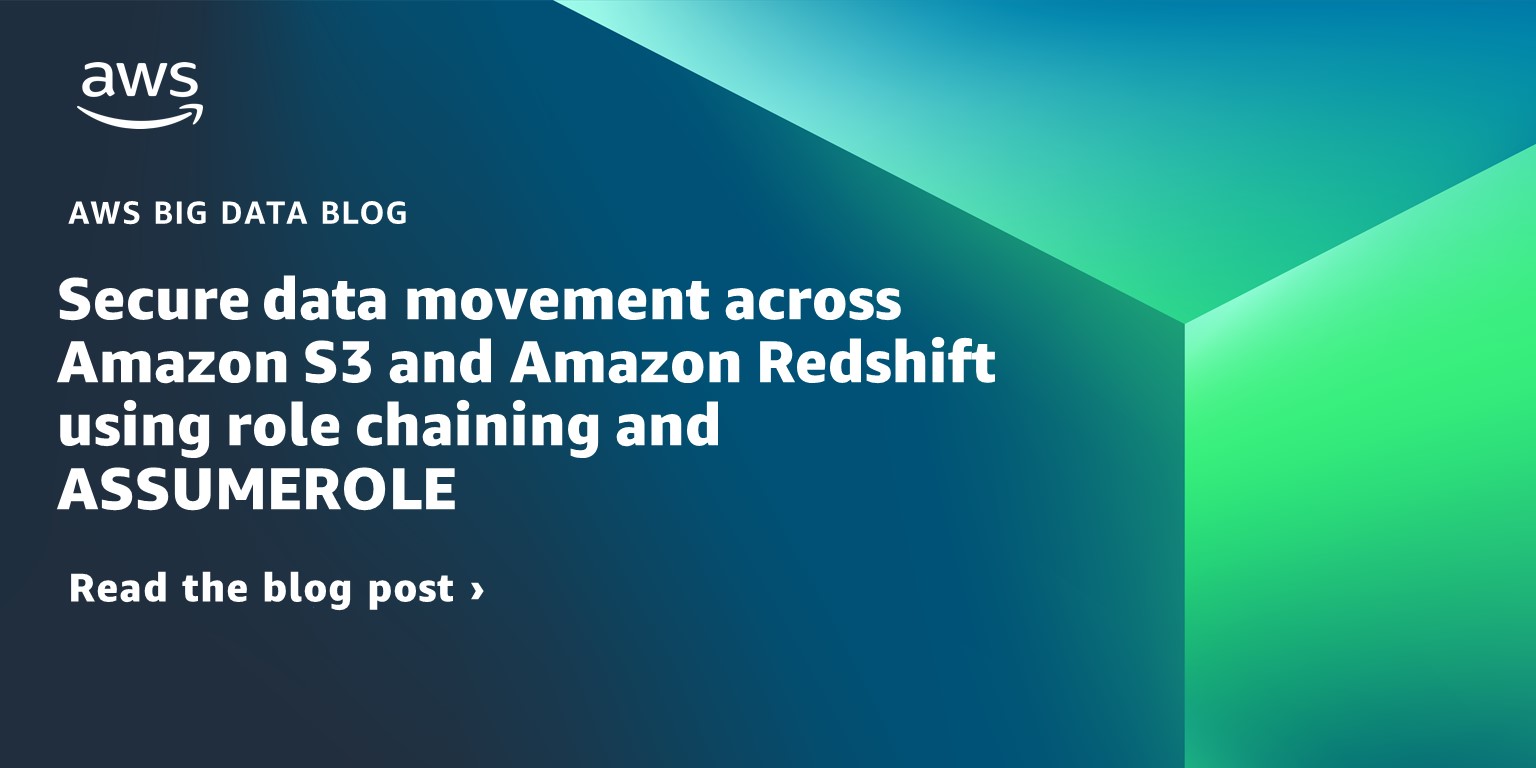AWS Big Data Blog
Category: Amazon Simple Storage Service (S3)
Secure data movement across Amazon S3 and Amazon Redshift using role chaining and ASSUMEROLE
Data lakes use a ring of purpose-built data services around a central data lake. Data needs to move between these services and data stores easily and securely. The following are some examples of such services: Amazon Simple Storage Service (Amazon S3), which stores structured, unstructured, and semi-structured data Amazon Redshift, a fully managed, petabyte-scale data […]
Best practices to optimize data access performance from Amazon EMR and AWS Glue to Amazon S3
June 2024: This post was reviewed for accuracy and updated to cover Apache Iceberg. June 2023: This post was reviewed and updated for accuracy. Customers are increasingly building data lakes to store data at massive scale in the cloud. It’s common to use distributed computing engines, cloud-native databases, and data warehouses when you want to […]
Design patterns: Set up AWS Glue Crawlers using S3 event notifications
The AWS Well-Architected Data Analytics Lens provides a set of guiding principles for analytics applications on AWS. One of the best practices it talks about is build a central Data Catalog to store, share, and track metadata changes. AWS Glue provides a Data Catalog to fulfill this requirement. AWS Glue also provides crawlers that automatically […]
Improve reusability and security using Amazon Athena parameterized queries
Amazon Athena is a serverless interactive query service that makes it easy to analyze data in Amazon Simple Storage Service (Amazon S3) using standard SQL, and you only pay for the amount of data scanned by your queries. If you use SQL to analyze your business on a daily basis, you may find yourself repeatedly […]
Make data available for analysis in seconds with Upsolver low-code data pipelines, Amazon Redshift Streaming Ingestion, and Amazon Redshift Serverless
Amazon Redshift is the most widely used cloud data warehouse. Amazon Redshift makes it easy and cost-effective to perform analytics on vast amounts of data. Amazon Redshift launched Streaming Ingestion for Amazon Kinesis Data Streams, which enables you to load data into Amazon Redshift with low latency and without having to stage the data in […]
Build a serverless pipeline to analyze streaming data using AWS Glue, Apache Hudi, and Amazon S3
Organizations typically accumulate massive volumes of data and continue to generate ever-exceeding data volumes, ranging from terabytes to petabytes and at times to exabytes of data. Such data is usually generated in disparate systems and requires an aggregation into a single location for analysis and insight generation. A data lake architecture allows you to aggregate […]
Export JSON data to Amazon S3 using Amazon Redshift UNLOAD
Amazon Redshift is a fast, scalable, secure, and fully managed cloud data warehouse that makes it simple and cost-effective to analyze all your data using standard SQL. Amazon Redshift offers up to three times better price performance than any other cloud data warehouse. Tens of thousands of customers use Amazon Redshift to process exabytes of […]
Doing more with less: Moving from transactional to stateful batch processing
Amazon processes hundreds of millions of financial transactions each day, including accounts receivable, accounts payable, royalties, amortizations, and remittances, from over a hundred different business entities. All of this data is sent to the eCommerce Financial Integration (eCFI) systems, where they are recorded in the subledger. Ensuring complete financial reconciliation at this scale is critical […]
Build a modern data architecture on AWS with Amazon AppFlow, AWS Lake Formation, and Amazon Redshift: Part 2
In Part 1 of this post, we provided a solution to build the sourcing, orchestration, and transformation of data from multiple source systems, including Salesforce, SAP, and Oracle, into a managed modern data platform. Roche partnered with AWS Professional Services to build out this fully automated and scalable platform to provide the foundation for their […]
Securely share your data across AWS accounts using AWS Lake Formation
Data lakes have become very popular with organizations that want a centralized repository that allows you to store all your structured data and unstructured data at any scale. Because data is stored as is, there is no need to convert it to a predefined schema in advance. When you have new business use cases, you […]







